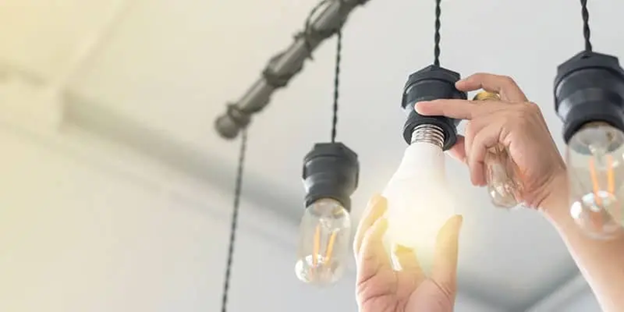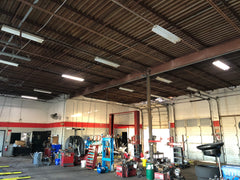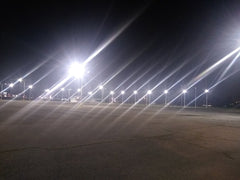Upgrade Now or Later? Understanding When to Make the Switch to LED Lighting
Shed light on a more energy-efficient solution: LED lighting! With its benefits, making the switch from traditional lighting has never been more enthralling.
Unravel the merits of elevating to LED lights, the cost comparison between LED and traditional options, and determine when to upgrade. Dig into elements prior to making the switch, including its influence on the environment and saving power.

What Do You Get from Shifting to LED
When talking about lighting, LEDs are the celebrities. Why? Well, let us enlighten you with key benefits.
-
LED lights are incredibly energy-saving. They consume up to 80% less energy compared to conventional bulbs. This lowers electricity bills and reduces pressure on the environment.
-
They emit very little heat. This makes them safer to use and reduces the risk of accidental burns or fires.
-
And let's not overlook versatility! LED lights have diverse shapes, sizes, and shades. From warm tones for cozy spaces to vibrant hues that throw in a pop of excitement.
- Drops greenhouse gas emissions, diminishing carbon footprint. This eco-friendly preference promotes a brighter tomorrow for newer generations.
Comparative Costs: LED vs Traditional Lighting
Cost should be assessed and calculated when lighting homes and offices. LED lighting is predominant owing to its capacity and lengthy lifespan. How does LED lighting expenditure differ from traditional lighting?
Early Cost
While the early cost of LED is higher than regular incandescent or fluorescent, the extended savings outweighs these upfront fees. They deplete less energy, marking down electricity bills.
Lifespan
Light-emitting diodes persist up to 50,000 hours, while incandescent bulbs generally last around 1,200 hours. Fewer replenishments and less money is spent on new lighting.
Heat Emission
LEDs emit little heat as opposed to traditional lighting. This reduces the threats of fire hazards and lowers cooling costs during hot summer months.
Keep in mind that while LED bulbs may initially seem overpriced, their longevity and energy performance make them a wise stable investment. Weigh the potential cost savings associated with switching to LED lighting prior to deciding whether or not you want to upgrade!

How to Determine When to Plan for an Upgrade
Is your current lighting system not delivering the results you desire? Are light flickers and high energy bills constant? If so, perhaps it’s time for an LED lighting update. But how do you establish when the right time is?
-
Examine your existing lighting setup. Is it outdated or inefficient? Traditional lighting like incandescent bulbs or fluorescent tubes are notable for consuming excessive energy and requiring periodic changing.
-
Consider the performance of your current system. Are certain areas in your space poorly lit or overly bright? Do you frequently experience bulb burnouts that disrupt productivity? These issues can greatly impact the comfort and functionality of your environment.
-
Cost is a prominent constituent. LED bulbs provide significant long-term savings. Calculate the potential return on investment (ROI) as you compare electricity costs, maintenance expenses, and replacement periods between types of lighting.
-
Assess specific goals or requirements for your space. Do you need improved color rendering for a retail setting or enhanced visibility in task-oriented areas such as offices or workshops? LED lights offer customizable features that can help meet these specific needs.
-
Stay informed about advancements and industry standards. As LED technology rapidly evolves, new product offerings may deliver even greater benefits such as increased efficiency or enhanced control options.
Pondering conditions such as performance issues, overall cost-savings potential, and staying up-to-date with industry trends help you decide when it's time for an upgrade.
What are the HTM Lighting LED Products
The benefits of LED lighting surpass the flaws of traditional lighting methods. LEDs yield energy savings and cost reductions, as well as superior performance and longevity.
It has improved lighting quality output with better color rendering capabilities. They produce bright illumination without flickering or buzzing noises that can be distracting and irritating with older technologies. They suit several applications such as residential spaces, commercial buildings, and outdoor landscapes.
Whether you need efficient indoor lighting solutions like LED bulbs or panels for your home or office space or high-quality outdoor fixtures such as flood lights or street lights. Their range of products includes everything from retrofit lamps that can easily replace existing bulbs to complete integrated systems designed for specific purposes.
HTM Lighting’s cutting-edge technology combined with energy efficiency across their product line-up. With their commitment to quality and innovation in the field of LED lighting solutions, you can trust them to meet your needs while also reaping all the benefits that this upgrade brings.
Upgrade now! Embrace the future of illumination as you switch to LED lighting. Experience brighter spaces while saving money on your energy bills, contributing towards a greener planet. Don't miss out on all the advantages that modern technology has to offer when illuminating your world!
Frequent Misconceptions about LED Lighting
LED lighting is popular, but there are still misconceptions surrounding this technology. Let's debunk common myths about LED lighting.
Harsh and Unnatural Light
LEDs produce harsh and unnatural light. They come in various color temperatures to suit diverse preferences. You can opt for an ambient cozy warm white or cool white for task lighting. Modern LEDs have improved color rendering, causing colors to appear true-to-life.
Full Brightness Rendering
Some people believe that LEDs take time to achieve full brightness. This may have been true for early models, but today's versions supply instant illumination as soon as they turn on.
House Rewiring
There are worries about requiring a house or office rewiring when switching to LED. Most fixtures are compatible with retrofit LED lamps which can replace existing incandescent or fluorescent bulbs without rewiring.
Final Thoughts: Is it Time to Switch?
After reviewing the benefits, cost comparisons, and other elements, it is obvious that upgrading to LED lighting is a smart choice. The advantages of LED lighting make it a stable and lasting investment.
Before switching, heed your specific needs and requirements. Consider space size, usage patterns, desired light quality or color temperature options, dimming capabilities if needed for certain areas like living rooms or dining spaces – all these aspects should influence your decision-making process.
Upgrading to LED lighting contributes positively towards environmental sustainability by reducing carbon emissions through lower energy consumption. Unlike traditional incandescent bulbs or fluorescent tubes containing mercury vapor lamps (CFLs), LEDs do not contain hazardous substances harmful upon disposal.
So whether you're looking at enhancing your home's ambiance with warm white LEDs in cozy spaces or seeking bright illuminations for commercial settings – HTM Lighting Solutions offers a versatile range of selections.
Please feel free to Contact Us today for a complimentary quote on your lighting project!
- Michael Tomas






